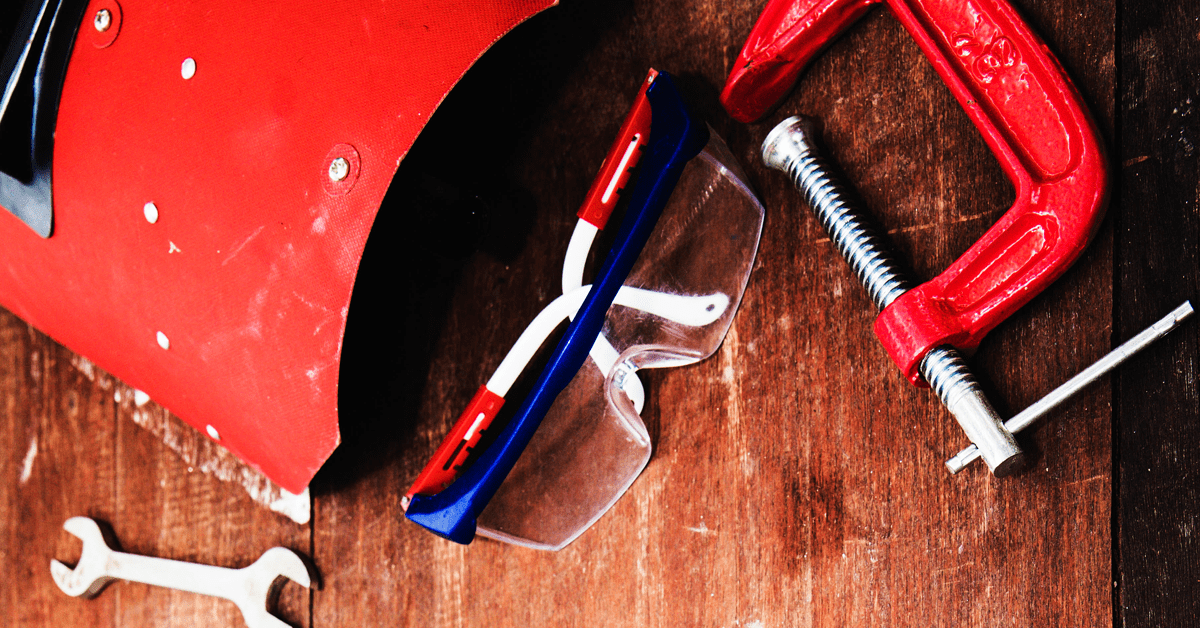Eye Protection for Construction and Field Service Work
By My Service Depot on Thursday, March 5, 2020A lot of hands-on work also puts your eyes at risk. Take care to keep avoid injury and protect yourself.
There’s a reason our eyes are set back into the skull and surrounded by bone; they are incredibly fragile. Even just a small speck of dirt can end up wreaking havoc on the soft tissue of the eyes, scratching the cornea or even causing infections.
But as someone who works in construction or a field service trade, you don’t just deal with a bit of dirt here and there. Your eyes get exposed to some powerful irritants, from sawdust to flying sparks and from gases to harsh chemicals. It only takes a second to put on protective eye gear, but a lifetime to regret not wearing any. Take a look at the different options available for common dangers in your work environment so that you know what to look for. Also, don’t hesitate to brush up on your industry’s OSHA regulations.
Protection from Impact
You don’t really want a projectile to hit any part of your body, but whereas a bone or muscle can heal, an impaled eye is done for. Kaput, forever. If you’re performing (or simply near) any kind of drilling, sawing, chipping, riveting, or any other machinery that has the potential to blast off a chunk of material, you need impact-resistant eye gear. Safety spectacles must have side lenses to provide adequate protection from flying objects. Goggles prevent objects from hitting the eye from underneath, and face shields (which need to be worn in combination with spectacles or goggles for proper impact protection) can add an extra layer of safety that covers the entire face.
Protection from Dust
Tiny dust particles—whether from sanding wood, buffing metal, or grinding stone—can be some of the most irritating substances you’ll encounter on the job. Don’t fool yourself into thinking that dust won’t harm your eyes. Exposure to dust for even a moment will leave you squinting and rubbing your eyes, making it virtually impossible to get any other work done until you’ve blinked the dust away as much as you can. Plus, those microscopic remnants still have the power to cause tiny scratches on the surface of your eye, which invites infection.
Since dust wafts through the air in any direction the wind blows, you should use goggles for complete protection. Note that dust is also terrible for your lungs, so if you’re protecting your eyes from dust, pop a respirator on as well.
Protection from Heat
Extreme heat can injure your eyes, and open flames always have the possibility of sending out a spark that could land in your eye. If your work involves any type of welding, casting, or furnace maintenance, wear eye protection that can withstand heat. Welder’s goggles protect just the eyes, whereas a welder’s mask protects the entire face. Be sure to use eye PPE rated for use with heat, or the material could melt against your skin. (Gross!)
Protection from Chemicals and Gases
A chemical that splashes into your eye could cause devastating injury, but even toxic fumes can irritate your eye and make it dangerous for you to perform your job. Any time you handle or are exposed to liquids, wear splash-resistant goggles. These have lenses that wrap all the way around the top, side and bottom to create a seamless barrier between your eyes and any errant chemicals. For extra protection, pair goggles with a face shield, and always note where the nearest eye wash station or fresh water source is located any time you put your goggles on. (Pest control companies that work in the field should consider keeping some sort of washing solution in their service vehicles.)
Note that ventilation structures in the goggles prevent moisture from building up on the inside of the lenses. If you work with any gases or chemicals that tend to turn into gas at room temperature, you’ll want to choose goggles specifically designed to be gas-resistant. These have a tight seal where the goggles make contact with your skin and do not have any ventilation.
Protection from Bright Light and Radiation
If you work with lasers or perform welding work, you need special eye wear that allows you to focus on what you’re doing despite staring at a bright light. Because you want maximum protection from the light while still being able to perform your work, the general rule of thumb is to try on filter lenses in succession until you find the one that completely blocks your ability to see what’s in front of you. Then, try one filter down so that you can still see your work while most of the bright light from the welding torch is blocked by the filter.
Lasers in particular are not only bright, but can also give off radiation, which can burn the delicate tissues in your eyes or even cause permanent scarring or blindness. Choose eyewear specifically rated for exposure to laser light. Spectacles with side lenses serve as appropriate protection against laser light if there are no other safety hazards in the area to warrant goggles or a face mask.


